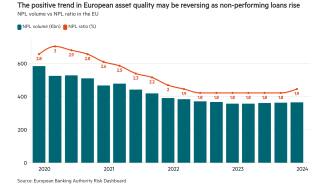Last year saw regulators attempt to bring greater clarity, transparency and probity around the use of terms such as ‘environmental, social and governance (ESG)’ and ‘green’.
This is how it played out. In January 2023, the UK’s Competition and Markets Authority announced plans help it to better understand how consumer protection legislation could be used to tackle misleading environmental claims that affect consumers.
In March 2023, the European Commission adopted a draft proposal for a Green Claims Directive to ensure “consumers receive reliable, comparable and verifiable environmental information on products”.
Given concerns about the clarity and quality of ESG ratings being provided, on March 30, the UK Treasury opened a consultation on the future regulatory regime for ESG ratings providers, which would see them brought within the regulatory remit of the Financial Conduct Authority (FCA).
On October 4, the Dutch Authority for the Financial Markets entered the fray, publishing a set of guidelines designed to push for greater transparency on claims of sustainability made by financial institutions and pension providers in the Netherlands.
And just before the year came to a close, the FCA announced a batch of new regulations in December under its Sustainability Disclosure Requirements. These include anti-greenwashing rules, product labels and renewed naming and marketing requirements, aimed at increasing investor confidence in sustainability-related claims by investment funds and tackling a “lack of consistency” regarding the use of terms such as ‘green’, ‘ESG’ or ‘sustainable’.
Will the transition piece get more structure around it?
So, what does 2024 have in store?
With December’s COP28 in Dubai ending with 198 countries agreeing to “[transition] away from fossil fuels in energy systems, in a just, orderly and equitable manner”, the next 12 months should be about trying to better articulate what a “transition away” means in practice.
Law firm Hogan Lovell’s co-heads of sustainable finance and investment, Bryony Widdup and Rita Hunter, expect the net zero transition to be a big regulatory theme in 2024.
We don’t really have a market in transition financing in the UK or the EU ... Everything’s been focused on having a ‘green’ category.
“There’s been a lack of funding orientation around transition,” says Ms Widdup. “We don’t really have a market in transition financing in the UK or the EU. We haven’t had a sufficiently secure taxonomy on transition or consistent policy direction and policy incentives to drive forward anticipated returns on investments in that area. Everything’s been focused on having a ‘green’ category.”
She expects 2024 will see that transition piece get more structure in terms of what it is, the ideal outcomes for the transition over the next decade, which aspects of the energy transition are we most focused on, and other net zero, longer-term investments.
Ms Widdup says the idea behind transition finance is to have something where the financing or proceeds are applied to a project, but that project has to have a structure that links it to a net zero transition in a formal way.
“But if you’re trying to do that for a big coal company, or another energy company, the whole greenwashing conversation means it’s really difficult to say ‘Well, we’re funding Shell with green loans’. So, how does that work from a public or risk and liability perspective?”
The UK’s Transition Plan Taskforce’s (TPT) sector guidance, which was open for public consultation until December 29, states that companies must evidence how they intend to obtain funding in order to finance the changes necessary to progress their net zero journey. Final guidance documents should be published in February following the consultation.
What constitutes transition activities?
Ms Widdup says this brings the opportunity to finance in a more structured way, which has been missing until now. “We haven’t had a consistent idea of what a quality transition plan is, or shared understanding around a transition taxonomy,” she explains.
“The TPT gives the framework, what goes into looking at climate and nature risks, and how you identify relevant factors with the Task Force on Climate-related Financial Disclosures and the Taskforce on Nature-related Financial Disclosures as backdrop frameworks,” she explains.
Law firm Pinsent Masons’ sustainable finance advisor James Hay says companies should not view transition plans as just another disclosure document, but should recognise how the act of transition planning enhances business strategy by helping businesses to capture opportunities and build resilience.
“Given that transition plans are, for now, voluntary, elevating transition planning to a core component of business strategy provides the imperative to get started — a call to action rooted in good business,” he notes.
The EU’s taxonomy has strived to clarify what constitutes ‘transition’ activities. It lists things such as building renovation, low-carbon buses for interurban transport (less than 50g of CO2 emissions per kilometre), and low-carbon cement manufacturing (less than 0.498 tonnes of CO2 equivalent per tonne of cement), but Ms Hunter says this has not been a key focus from an industry perspective.
How transition activities are rewarded under the EU taxonomy is likely to prove contentious, however, with some energy companies arguing for gas to be included as a ‘transition’ fuel for coal-dependent economies, as it reduces carbon emissions and air pollutants. However, environmentalists argue that gas should be replaced by cleaner forms of energy, such as renewables.
But should coal or oil companies even receive financing to help them transition?
“The perception is if a bank gives money to an oil company, that’s bad. But if you strip it back and ask what are we trying to achieve, there’s a lot to be said for helping companies transition and giving companies money to enable them to develop the technologies they need to [transition],” says Ms Hunter.
Integrating social with environmental considerations
One of the upsides to the TPT guidance for banks is that it creates a set of easily comparable data points from underlying companies in a portfolio. “However, it isn’t a global mandatory standard,” Ms Hunter notes, “so banks will need to map between the TPT guidance and European reporting technical standards.”
But what is still not being accommodated sufficiently, Ms Widdup adds, is this just transition piece and how you integrate social with environmental considerations. “In biodiversity and nature conversations, the integration of indigenous people’s rights, views and skills is still not sufficiently high on the priority agenda. We don’t hear that enough in the conversation,” she says.
Nature and biodiversity considerations feel very overwhelming for people, she explains, who are still not there on their emissions reporting. “But biodiversity and nature are important for climate. They’re not standalone topics. The nature piece is going to help drive the climate side.”













